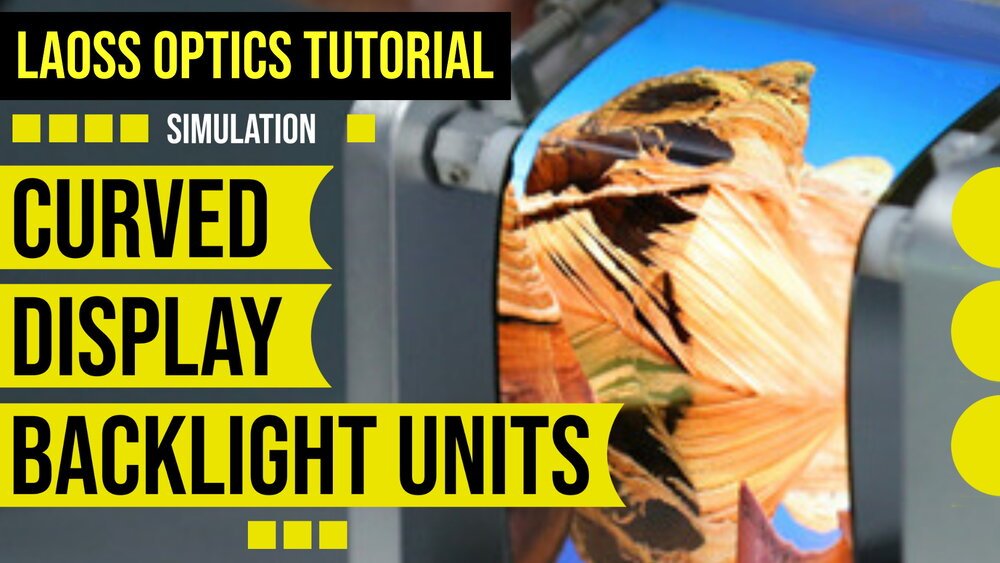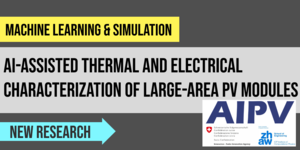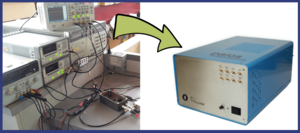
News
Research, Innovations, and Scientific Event Updates

Welcome to our new series of videos FLUXiM's Science Shorts
This month we’re keeping it short. But not in terms of content, Science Shorts is the latest video series we’ve launched to help researchers working on photovoltaics, displays, and batteries. Watch the first episode here. PLUS we´re sponsoring this year's NanoGe Spring conference (HOPV) in Valencia, Spain. Find out what we´ll be doing here.

Join our Online Activity. Let’s Discuss Research Together
In February’s edition of our monthly newsletter we introduce you to the various channels we are using to promote and discuss the research being carried our by our customers and colleagues. There’s a whole lot of resources being shared online, don’t miss out. Join the conversation —>

What will Solar Cell and LED research deliver in 2022?
What will your research deliver in 2022? We’re hoping to see a continuation of the impressive work on bringing next generation solar cells and LEDs to market. Fluxim will of course be bring something to the table to help boost that research. Read on to find out what’s in store.

2021 A Record Year for Research Enabled with Fluxim's Tools
The year end is nearly here and traditionally we take this time to reflect on what has occured in the past 12 months. Another year has passed without the pleasure of meeting up face-to-face with our customers, colleagues and collaborators. We miss this. Yet, 2021 has seen unprecedented demand for our instruments and software and 108 papers were published. In celebration we've made a video to share with you. Watch it here.

Global Research in 2021 Enabled by Fluxim
With 97 papers published in 2021 so far (and a few more to come before the year-end) it has been another record year for papers enabled with Fluxim’s software and measurement instruments.
In our latest post you’ll find the papers that really stood out for us this year. PLUS a sneak preview of our latest video on PHELOS.

Advanced Optical Simulation to Develop Curved OLED and LCD Displays
Curved (Organic) Liquid Crystal Displays [(O)LCD] are becoming increasingly popular in the consumer electronics and automotive sectors. Here we demonstrate how to use the simulation software Loass to rapidly develop flexible Backlight Units which are an essential components of OLCDs.

How a Master Thesis Project Developed into the New Setfos Advanced Excitonics Module
We recently launched version 5.2 of our advanced simulation software Setfos. On top of the many new features that were deployed we developed a new module: The Advanced Excitonics Module (AE) that features a novel 3D model for Excitons based on a Master-Equation approach. Learn how to use it in our latest post.

We released Setfos 5.2. The most advanced simulation software for LEDs & solar cells is now even better.
The summer is here, and we’ve got some exciting news to share regarding our simulation software Setfos. Plus, we’ve posted the latest papers from our customers, and if you’ve missed our past scientific tutorials, don’t worry we have gathered them all together in one place. Read all about it here in our newsletter.

Combining Machine Learning and Simulation for Photovoltaics
We’ve got lots to share in our latest research news post. We’re detailing the promising results generated from the research project AIPV which looks at how machine learning and simulation can be used in the characterization of PV panels. Plus we’ve got two new software updates to Setfos and Loass, the latest research published by our customers and we’re hiring!

Angle-resolved Photoluminescence and Electroluminescence of LEDs and Light-Emitting Materials
In this month's newsletter, we'll show you how our colleagues at The Max Planck Institute for Polymer Research and the ETH used such an instrument, plus we detail some of the properties and applications of quantum dots, in particular, perovskite nanocrystals.

Here is how a Setfos simulation can help your development of LEDs and solar cells (with step by step tutorials)
Using simulation to validate your experiments or to understand the mechanisms governing your OLED or solar cell. In April’s newsletter, Dr. Urs Aeberhard demonstrates how to use the advanced simulation software Setfos to model a Solar cell and an OLED.

Developing the next generation of solar cells or LEDs requires fast and reliable characterization tools
Classical research techniques for characterizing solar cells and LEDs are time-consuming and lead to unreliable results. This is true especially when you are dealing with materials that degrade fast. We have developed a tool to combat this problem.
Find out how Paios can supercharge your research.

New Papers Published from LED and Solar Cell Researchers
We’re always delighted when we see our research tools have assisted in getting new research published. Read the latest papers from our customers on working on next-generation perovskite solar cells OPVs and LEDs.

Celebrating Research in 2020
Research is the backbone of what we do at Fluxim. Join us in reading about the standout research of 2020 and the various research projects we’ve been collaborating on this year.

Latest Solar Cell and LED Research
We’re always delighted when we see our research tools have assisted in getting new research published. Read the latest papers from our customers on Pero-LEDs and OPVs.

Q3 News: SimOEP'20 Review, New Papers & How Litos Lite was developed.
This quarter’s news updates from Fluxim. SIMOEP20 review with links to all the recorded sessions, IMID20 review, we interview Konrad Domanski about Litos Lite and 65 published papers so far this year.

Quantifying Electro-Optical Cross-Talk in White OLED / Color Filter Displays
The simulation software Laoss can be used to quantitatively analyze optical and electrical cross-talk effects in white organic light-emitting diode (WOLED) / color filter (CF) displays. Optical light leakage is found to be highly influenced by the topography of the pixel definition layer (PDL) while it only shows little correlation with OLED parameters, such as the emitter orientation. Electro-optical simulations exemplify the importance of electrical and optical cross-talk to be dominant in different voltage ranges.

The Fluxim team has grown again
We’re excited to welcome two new colleagues to the FLUXiM team.

New Product Launch: Litos Lite
Litos Lite is the new Parallel JV and stability measurement platform for stress testing solar cells and LEDs .

Our Simulation Software Laoss Just Got Better!
After several months in development, our simulation software Laoss adds a brand new optical module.
The Laoss optical module sits alongside our electrical and thermal modules. Together they offer a powerful software package for the design and simulation of OLEDs, perovskite/organic solar cells and large area semiconductor devices.
